ZMST
$39.95 $29.95
Zinc, Magnesium, Selenium and Taurine (ZMST) are essential nutrients for individuals. Because of our modern lifestyles, these nutrients are often deficient in the Western Diet and have been depleted from our soils and not found in adequate levels in our foods. The deficiency of these nutrients can lead to a host of disorders that include cardiovascular diseases, hypertension, sleep disorders, mental health problems
ZMST
Zinc, Magnesium, Selenium and Taurine (ZMST) are essential nutrients for individuals. Because of our modern lifestyles, these nutrients are often deficient in the Western Diet and have been depleted from our soils and not found in adequate levels in our foods. The deficiency of these nutrients can lead to a host of disorders that include cardiovascular diseases, hypertension, sleep disorders, mental health problems and even musculoskeletal problems like osteoporosis and muscle aches and pains.
Ingredients per capsule:
Magnesium Citrate (100mg elemental Magnesium)
Zinc gluconate (2.5mg elemental Zinc)
Organic Selenium yeast Saccharomyces cerevisiae (6.25mcg elemental selenium)
Taurine 25mg
Dosage
How many: Take one to three capsules,
How often: one to three times per day.
Your rate absorption is proportional to your body magnesium levels.
If your body levels are low then absorption is enhanced.
If your body levels are fine or high then absorption slows down.
If you take more than you need the magnesium drags water into your intestine and creates loose watery stools or diarrhoea.
If you suspect deficiency you can take up to 3 ZMST capsules 3 times daily. As your levels increase your absorption slows down and you get watery loose stools. If or when this happens reduce your dose to 2 and then 1 capsule 3 times daily.
Long term taking 1 to 3 capsules of ZMST daily will maintain healthy magnesium levels.
MAGNESIUM BASICS
Magnesium (Mg2+) is the second most abundant intracellular mineral, after potassium, and is the fourth most abundant cation in the human body. This essential mineral is needed for a broad variety of physiological and biochemical functions.
What does a Magnesium Deficiency look like?
HOW DOES MAGNESIUM WORK?
Enzyme production
As a co-factor in more than 300 enzymatic reactions, which often depend on energy production (yes ATP), Mg2+ is involved in many biochemical pathways of key importance, including the breakdown of macronutrients, oxidative phosphorylation, DNA and protein synthesis, neuro-muscular excitability, and regulation of parathyroid hormone secretion.
So basically almost every time you break something down to raw materials and building blocks or build something new in your body there is a requirement for magnesium to allow that to happen.
MAGNESIUM AS AN “OFF SWITCH”
Magnesium is not a sedative as such but it makes sure you are capable of switching off. Calcium is forced into cells as an “on switch”; inducing an action like a thought or muscle contraction or twitch or spasm. Magnesium lives mainly inside cells and is pushed out of the cell to block the calcium and provide an “off switch”. Magnesium deficiency means you have exhausted your natural off switches for thoughts and muscles and nerves.
OVERVIEW OF FACTORS AFFECTING ABSORPTION OF MG2+
Dosing of Magnesium and its absorption – smaller dose, better absorption
With a minimum recommended daily intake of 370 mg, the absorption rate of Mg2+ in the intestine ranges from 30-50%. However, the efficiency of Mg2+ uptake is dependent on the ingested dose and your internal levels. When your body is deficient you absorb more and as your levels build up absorption slows down.
For example, studies with a low dietary Mg2+ intake showed that the relative absorption rate can reach 80%, whereas it is reduced to 20% with Mg2+ oversupplies.
This again confirms we need multiple, smaller dosages over the day for great Mg2+ absorption. Otherwise you overload your gut and reduce absorption and create gut upset.
So, don’t be fooled by claims of mega-magnesium dosage or massive once a day doses or claims of superior absorption to allow for higher doses as Mg 2+ doesn’t work that way. You may end up paying for it on the toilet with watery stools and gut pain while wasting your magnesium and money flushed down the toilet.
INTESTINAL MG2+ ABSORPTION AND INFLUENCING FACTORS.
Intestinal Mg2+ absorption occurs predominantly in the small intestine and smaller amounts are absorbed in the colon. In humans, Mg2+ absorption starts approximately 1 h after oral intake, reaches a plateau after 2-2.5 h up to 4-5 h and then declines. At 6 h, the Mg2+ absorption is approximately 80% complete. Thus, taking multiple, small doses is preferable over one large dose.
It is important to note that your body will prevent over dose by reducing absorption if you don’t need it and increasing absorption when magnesium is deficient and you are craving more. When we see a study showing % of absorption it is almost an indication of the magnesium status of the population studied, rather than reflecting superior bioavailability of the supplemental form of magnesium. For example if you got plenty of Magnesium you may only need to absorb 20% of the ingested dose but when deficient you may absorb up to 90% of the ingested amount. If I want to prove superior absorption of my magnesium I just select magnesium deficient people to be in my study.
OXALATES AND PHYTATES REDUCE MAGNESIUM ABSORPTION
Many of our healthy foods contain oxalates, such as beets, spinach, almonds, sweet potatoes and many more. And some people also have a gut microbiome that generates excessive oxalic acid from healthy foods. Magnesium binds to these oxalates in our intestines to make magnesium oxalate crystals. This inhibits Magnesium bioavailability. But this is a good thing as this is one of the important functions of magnesium as a build-up of oxalates in your body can create signs and symptoms of magnesium deficiency such as twitching, cramping, restlessness, irritability, muscle and joint pain, insomnia and cramping. In many cases where people believe they are correcting this signs and symptoms of magnesium deficiency, they are actually correcting the symptoms of oxalate overload by stripping oxalates from their system.
Some people find if they take magnesium on an empty stomach they can’t tolerate the dose so they take it with meals and it no longer causes loose stools, this is because it is binding to the oxalates in our foods and not drawing in the water to create the loose stools.
If you have issues with excessive oxalates take magnesium before and with meals to bind to it and strip it out.
If you want to load your system with magnesium and get it out of your gut and into your body take it away from foods rich in oxalates include Spinach, Bran flakes, Rhubarb, Beets, Potato, Nuts and nut butters.
Similar scenario with phytates from cereals and grains. They also bind and inhibit magnesium absorption and combining magnesium with phytates will reduce the symptoms of overdose but also result in reduced magnesium bioavailability.
* Improve Absorption * Impair Absorption
Endogenous Factors
* Low Mg2+ status * Increasing age
* Balanced Mg2+ status
* Intestinal dysfunction (eg inCD, IBD or SBS)
Exogenous Factors * MCT (SFA) (?)
* Proteins (?)
* Casein phosphopeptides (?)
* Low – or indigestible carbohydrates (ie. oligosaccharides, inulin, mannitol and lactulose)
* High solubility of Mg2+
* Solubilized Mg2+ (eg. effervescent tablets) * High single Mg2+ intake dose
* Partly fermentable fibres (hemicellulose)
* Non-fermentable fibres (cellulose and lignin)
* LCT (?)
* Phytate
* Oxylate
* Pharmocological doses of calcium, phosphorus, iron, copper, manganese and zinc
* Slow-release formulations (?)
Can magnesium be taken with other minerals such as zinc and selenium?
Early studies reported that increasing calcium in the diet significantly depressed Mg2+ absorption. The same depressive effect on Mg2+ absorption was shown with excess phosphorus, iron, copper, manganese and zinc. However, in these studies, un-physiological (super-high) doses of the minerals were used.
When these substances are consumed within a physiological range, such as present in a regular diet or ZMST there is no inhibition. For example, long-term Mg2+ balance studies with calcium doses >1000 mg/d did not produce a negative effect on Mg2+ uptake. Other research demonstrated in a human study with 26 adolescent girls that high calcium intake (1667 mg/d) had no relevant impact on measures of Mg2+ utilization, including the absorption rate or urinary or faecal excretion. Likewise, a balance study with adolescent girls showed that high calcium intake (1800 mg/d) did not alter Mg2+ kinetics or balance compared to a calcium intake of 800 mg/d.
Does Zinc Inhibit Magnesium Absorption?
In an earlier study, researchers compared the absorption of magnesium when individuals were supplemented with zinc. Individuals were either given a control diet, or supplemented with a massive 142mg of zinc today. It took this level of zinc to cause a magnesium absorption inhibitory effect. Thus, the level of zinc in ZMST (2.5mg per capsule) won’t significantly impact negatively on magnesium absorption.
Thus, taking magnesium with healthy levels of zinc and selenium will not negatively impact on the absorption of magnesium, especially if the magnesium is in the magnesium citrate form.
When to take magnesium, zinc and selenium?
As mentioned, magnesium absorption is affected by many factors. Below are the details of research into this but the take home message is the following:
Protein and soluble fibre increases the absorption of these minerals and thus, a meal consisting of meat and veg is the best time to optimise absorption
Taking magnesium in the evening helps to relax the body (more details on that later) so again, the evening seems the best time
Take magnesium and zinc away from phytic acid. Phytic acid (mostly found in grains) blocks the absorption of magnesium and zinc
Oxalic acid inhibits the absorption of magnesium. Thus, a meal containing plants rich in oxalic acid (such as spinach and kale) inhibits the absorption magnesium
Taking magnesium and zinc on an empty stomach reduces binding to oxalates and phytates and this is a good way of ensuring good availability
Magnesium Citrate – What is it good for?
Magnesium citrate is around 15% magnesium and 85% citrate. It is not just a ‘magnesium’ supplement.
The great thing about this form is that the ‘citrate’ has beneficial effects in the body also.
Citrate forms of minerals aid in:
Flushing toxins
Alkalising the body
Binding and eliminating oxalate crystals
Contributes to the citric acid/ Kreb’s cycle, which is our cellular energy production pathway
Magnesium citrate is well absorbed
Magnesium Citrate is better absorbed than other organic magnesium supplements tested. Also, your absorption may also be increased if you are deficient in magnesium. Below is a chart comparing the absorption of different forms of magnesium.
Type of Magnesium % of elemental magnesium Bioavailability
Oxide 60 4
Carbonate 45 30
Hydroxide 42 10
Citrate 16 90
Glycinate 18 80
Malate 6.5 70
The ‘Citrate’ in the Magnesium Citrate Reduces Oxalates in the Body
High levels of oxalates have wide ranging health damaging effects, which include the formation of kidney stones. Below is a list of the effects of oxalate sensitivity:
Inflammation in joints causing muscle stiffness and pain
Kidney stones
Urinary tract irritation, pain or urgency to urinate
Vulvar pain (chronic irritation and pain of the female genitalia)
Abdominal problems such as constipation or diarrhoea
Vitamin or mineral deficiency such as magnesium or vitamin B
Lethargy or problems sleeping
Histamine reactions such as hives
Sore, gritty eyes and “poke eye”
Increased thirst
Tired but wired. Fatigue with restlessness
Fascia and muscle soreness
The citrate in magnesium citrate has been found to buffer acid and be a potent urinary alkalizer aiding the excretion of excessive oxalates in your body, improving the before mentioned condition. This effect is only observed with Magnesium citrate and no other form of Magnesium.
ZINC GLUCONATE
Zinc basics
The metal zinc is nowadays well known to be essential for a well-operating human body. However, knowledge about zinc homeostasis, zinc deficiency, and related diseases is comparatively new.
What Zinc does for us
As mentioned earlier with magnesium, the zinc and magnesium enzymes are needed almost every time you break something down to raw materials and building blocks or build something new in your body. It is a structural component in proteins and it is involved in numerous cellular functions include, but are not limited to, cell proliferation and differentiation, RNA and DNA synthesis, stabilization of cell structures/membrane, as well as redox regulation, and apoptosis.
Many chronic diseases have been associated with zinc deficiency, such as: type 1 diabetes, rheumatoid arthritis, cancer, neurodegenerative diseases, and depression. There are also links between zinc deficiency and acute and chronic several infectious diseases such as shigellosis, acute cutaneous leishmaniosis, malaria, human immunodeficiency virus (HIV), tuberculosis, measles, and pneumonia.
The roles of Zinc in the body
There are numerous roles for zinc in the human body. Zinc cannot be stored and has to be taken up via food daily to guarantee sufficient supply. A large number of especially inflammatory diseases, but also aging, pregnancy, lactation, and vegetarian or vegan lifestyles are associated with zinc deficiency. Also, like with most minerals, a crappy diet will also lead to a zinc deficiency. Zinc is especially important during periods of rapid growth, both pre and postnatally, and for tissues with rapid cellular differentiation and turnover, such as the immune system and the gastrointestinal tract. Critical functions that are affected by zinc nurture include pregnancy outcome, physical growth, susceptibility to infection, and neurobehavioral development.
Pregnancy outcomes
Zinc is essential for men and women reproductive process. For men it is essential for sperm, hormone production and libido. For women it helps normal and healthy pregnancy; the duration of pregnancy (including rates of spontaneous abortion); fetal growth; the timing, sequencing, and efficiency of labor and delivery; and the incidence of stillbirths and congenital malformations.
Zinc and immunity
Zinc is vital for optimal immunity and even a mild zinc deficiency impairs immunity, delays wound healing, allows for ongoing inflammation and increases oxidative stress. Zinc is essential for the Th 1 immune system that is responsible for our first line of defence against infections and cancer etc. to be able to function, Zinc is needed so the immune cells actually know there is an infection and that they are required to attack. This results in a host of infections that can hang around longer than they are wanted!
Physical growth
Zinc has always been known to be essential for normal health and development but the impact of zinc on growth was first described in humans in adolescent populations in Iran and Egypt. In these studies of young adults who presented with a syndrome characterized by varying degrees of growth stunting and delayed sexual maturation (hypogonadal dwarfism), treatment with zinc induced accelerated growth and commencement of sexual maturation. It is well established now that zinc is the first place to look for any cases of failure to thrive and in those looking for enhanced growth.
Zinc and Inflammation and oxidative stress
Zinc (Zn) takes part in the regulation of chronic inflammatory status through the reduction of inflammatory cytokines. Zinc also reduces oxidative stress by participating in the synthesis of antioxidant enzymes and acts as a catalyzer of enzymes, taking part in lipid, carbohydrate, and protein metabolism.
Zinc and Insulin
Zinc is involved in the synthesis, storage, and release of insulin, which suggests the critical role of this microelement in the progression of type-2 diabetes mellitus, atherosclerosis, and metabolic syndrome (MS). Zinc is also involved in insulin signalling and deficiency can cause insulin resistance with both obesity and failure to thrive and build and sarcopenic obesity. As well as being involved in antioxidant protection that is necessary in insulin resistant syndromes and this oxidative stress and damage can be a cause of insulin resistance creating a vicious cycle that zinc helps to break.
Zinc and Obesity
Zinc levels are often decreased in obese patients. At the same time, the decrease in serum Zinc levels is accompanied by increased urinary concentrations, being indicative of increased Zinc excretion in obesity. Low Zinc status in obesity is also associated with aggravation of obesity-related metabolic disturbances like insulin resistance, inflammation, and altered lipid profile. Again showing how Zinc can be a major deficiency that leads to a vicious cycle that needs to be broken in order to see some improvement.
The effects of zinc in the body
Essential trace element used by over 300 enzymes in the body
The adult body only contains 2 to 3 grams of zinc
Zinc is found in ALL parts of the body
90% of body zinc is found in muscle and bones
High concentrations found in semen and prostate
Aids healthy hair, skin and nails
Vital for cell division such as pregnancy and normal growth and development
Important for fertility, sperm production, prostate health and healthy testosterone levels
Zinc is essential to balance female hormones and prevent premenstrual problems
Essential component for the immune system
Controls inflammation
Reduces oxidative stress by making antioxidants
Improves insulin sensitivity
The take home message for Zinc and metabolic diseases
Zinc is an essential trace element that plays a substantial role in the prevention of metabolic syndrome, including atherogenic dyslipidaemia, hyperglycemia, insulinemia, and elevated blood pressure through the inhibition of pro-inflammatory cytokine expression, which suppresses ROS production, protecting against oxidative stress damage.
Zinc takes part in free radical neutralization as well as in glucose and lipid metabolism. Zinc is thus highly significant in the pathogenesis of metabolic syndrome, which suggests that zinc supplementation would have a positive effect in regressing metabolic syndrome.
SELENIUM
Magnesium and zinc need selenium to function properly.
Selenium deficiency is often the rate limiting factor for zinc and magnesium function. Meaning if selenium is deficient the zinc and magnesium supplements can’t work properly. Selenium belongs to one of the trace elements essential for human health and life. In the body, selenium is involved in numerous processes
immune functions
antioxidant defence
cardiovascular system,
Muscle and bone development
detoxification
immunity
The biological functions of selenium result from the occurrence of the selenocysteine amino acid in proteins. The research has revealed that about a hundred selenoproteins can be found in our organisms. The most important of them are the antioxidant enzymes – glutathione peroxidase and thioredoxin reductase, as well as selenoprotein P, responsible for the storage and transport of selenium.
How do we normally consume Selenium?
Selenium levels of the soil determines the concentrations in plant foods. Brazil nuts, pumpkin seeds, especially young barley seedlings, green vegetables, shiitake mushrooms, and button mushrooms are excellent organic sources of selenium in regions with adequate selenium content in the soil.
Selenium yeast is an excellent source as well. Where yeast acts like a sponge and sucks up the selenium in the water. The yeast is then killed and not acting like a live yeast that can colonise and grow inside you but acts as a source of nutrients.
Animals that consume selenium containing plant-based foods, especially, fish, seafood, beef, and poultry are good sources of selenium from areas with adequate supply.
Remember, you only get adequate selenium in your diet of the soil is rich in selenium and around a billion people are deficient in the world.
Selenium Deficiency
Selenium deficiency occurs when there is inadequate dietary intake of selenium, typically due to a scarcity of selenium sources in a given region. The American Recommended Dietary Allowance (RDA) daily minimum requirement of selenium for optimal biological functioning is 70 and 55 micrograms (mcg) per day for men and women, respectively, per April 2000 recommendations. However, this level is considered low based on other studies, and some literature sets the minimum requirement at 90 mcg daily per adult.
The Symptoms of Selenium Deficiency
Symptoms of severe selenium deficiency are primarily related to heart muscles and joints. Moderate deficiency leads to increase in infertility in men, prostate cancer, and neurological diseases. Manifestations of rheumatoid arthritis, shortened fingers and toes or growth disorders in regions endemic to shortages in selenium in the soil should raise suspicion regarding selenium deficiency, especially in children 5 to 13 years of age. It is the constellation of symptoms that will, unfortunately, point to making the diagnosis, as there is not a specific finding that will allow the clinician to hone in on the fact that the patient is selenium deficient.
TAURINE
Taurine is one of the most abundant free amino acids in mammals. It is considered a basic regulator of cell homeostasis controlling calcium and magnesium channels helping to reduce calcium influx and magnesium release from cells and subsequent excretion. Taurine increases intracellular magnesium.
The beneficial effects of taurine are attributed to osmoregulation (regulation of cell volume), anti-oxidant effects, anti-inflammatory, calcium modulation, cell membrane stabilization and neuromodulation (brain health) and plays an important role in the conjugation of bile acid.
Taurine holds magnesium in cells
Calcium rushes into cells to activate them or induce an action like a thought or a muscle contraction. Magnesium is released from the cell to switch this off. Once released from cell the magnesium can be excreted and that is one mechanism behind magnesium depletion and the end result is too many on switches (calcium influx) and not enough off switches intracellular magnesium to be released.
Taurine works with ion channels to hold magnesium in cells and preventing the calcium influx and subsequent magnesium release and loss.
The ZMST take home message
ZMST is an essential supplement for optimal health that most individuals will benefit from. It contains the proper ratios of key nutrients and proper therapeutic dosages of magnesium so many people are deficient in. It contains magnesium in the best form (citrate) and in divided dosages for optimal absorption. ATP Science’ ZMST can be taken long term because the dosage is optimised to reduce or eliminate any gut problems associated with some magnesium supplements.
FAQ
How much is enough and how much is too much?
MAGNESIUM ZINC SELENIUM
Recommended Daily Intake (adult) Men: 420mg
Women: 320mg Men: 14mg
Women: 8mg Men: 70mcg
Women: 60mcg
Therapeutic (Daily Dosage Range) 100-600mg 20-60mg 25-400mcg
Toxicity (Daily Ingestion) 5000mg (33) 150mg (34) 400mcg (35)
HOW IS ZMST DIFFERENT TO ZMA? DO I NEED BOTH?
ZMST contains zinc and magnesium as does ZMA but also contains the essential cofactor selenium. The enzymes that use zinc and magnesium and the functional actions enhanced by their supplementation need selenium. If there is a selenium deficiency they cannot function properly and ZMA cannot work as planned. Selenium deficiency is very common and is a cause for a lot of metabolic defects in today’s society.
Taurine regulates calcium and magnesium activity and movement of magnesium, taurine deficiency will also prevent magnesium from moving effectively into cells. If taurine deficient ZMA cannot work as planned.
ZMST uses Magnesium citrate instead of magnesium aspartate. The magnesium aspartate molecule is approximately 85% L-aspartate and the aspartate has functions in the body for vasodilation and hormonal support but is rarely deficient and the excess does not force change but will contribute to the stored aspartate pool. Magnesium citrate is about 80% citrate and the citrate has a lot of biological functions such as alkalizing, energy production pathways, crystal removal and aids absorption.
You don’t need to take both as ZMA will supply only zinc and magnesium but not the necessary cofactors and the only difference then is a small amount of L-aspartate from the MA part of ZMA that is not in a large enough dose to induce change and only enough to top up and prevent deficiency but aspartate is rarely deficient so effects are negligible.
| Size |
|---|
Be the first to review “ZMST” Cancel reply
You must be logged in to post a review.
Related products
Anabolic Formulas
Anabolic Formulas
Anabolic Formulas
Amino Acids
Amino Acids
Anabolic Formulas
Amino Acids
Hemp Products

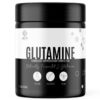
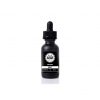
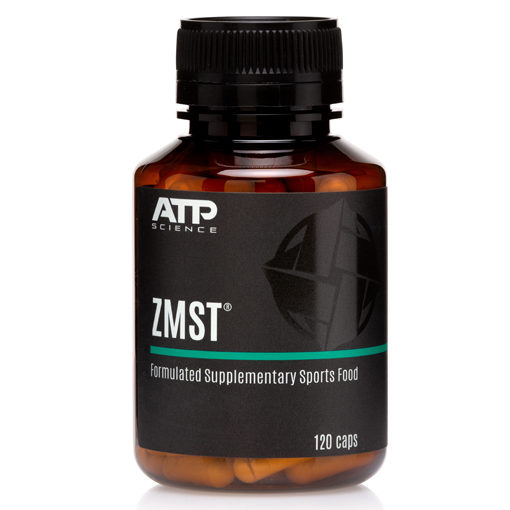



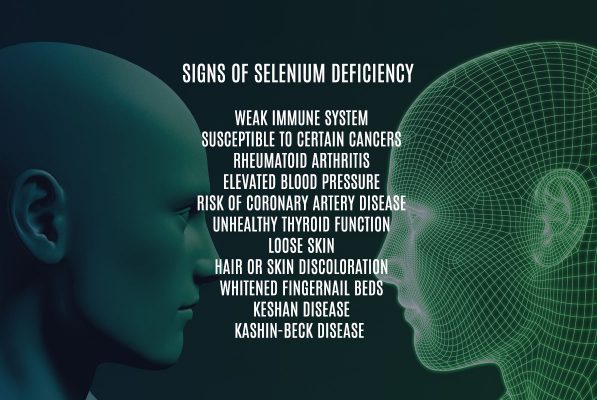
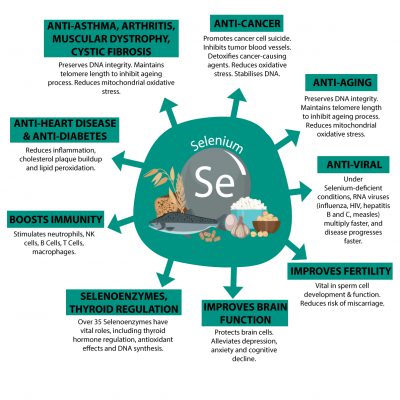
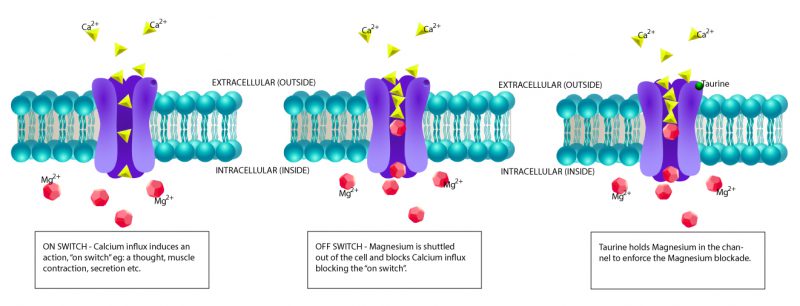

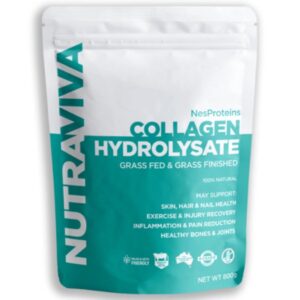
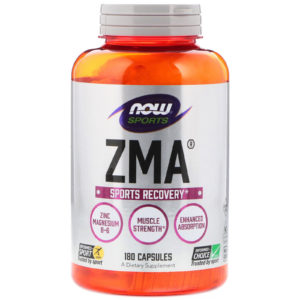
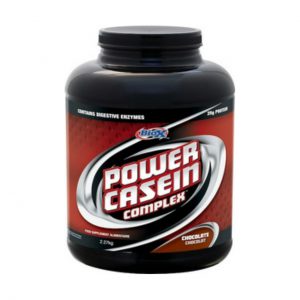
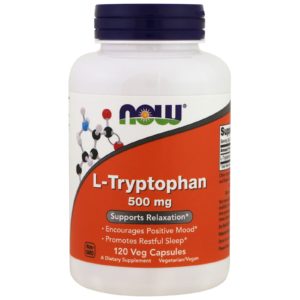



Reviews
There are no reviews yet.